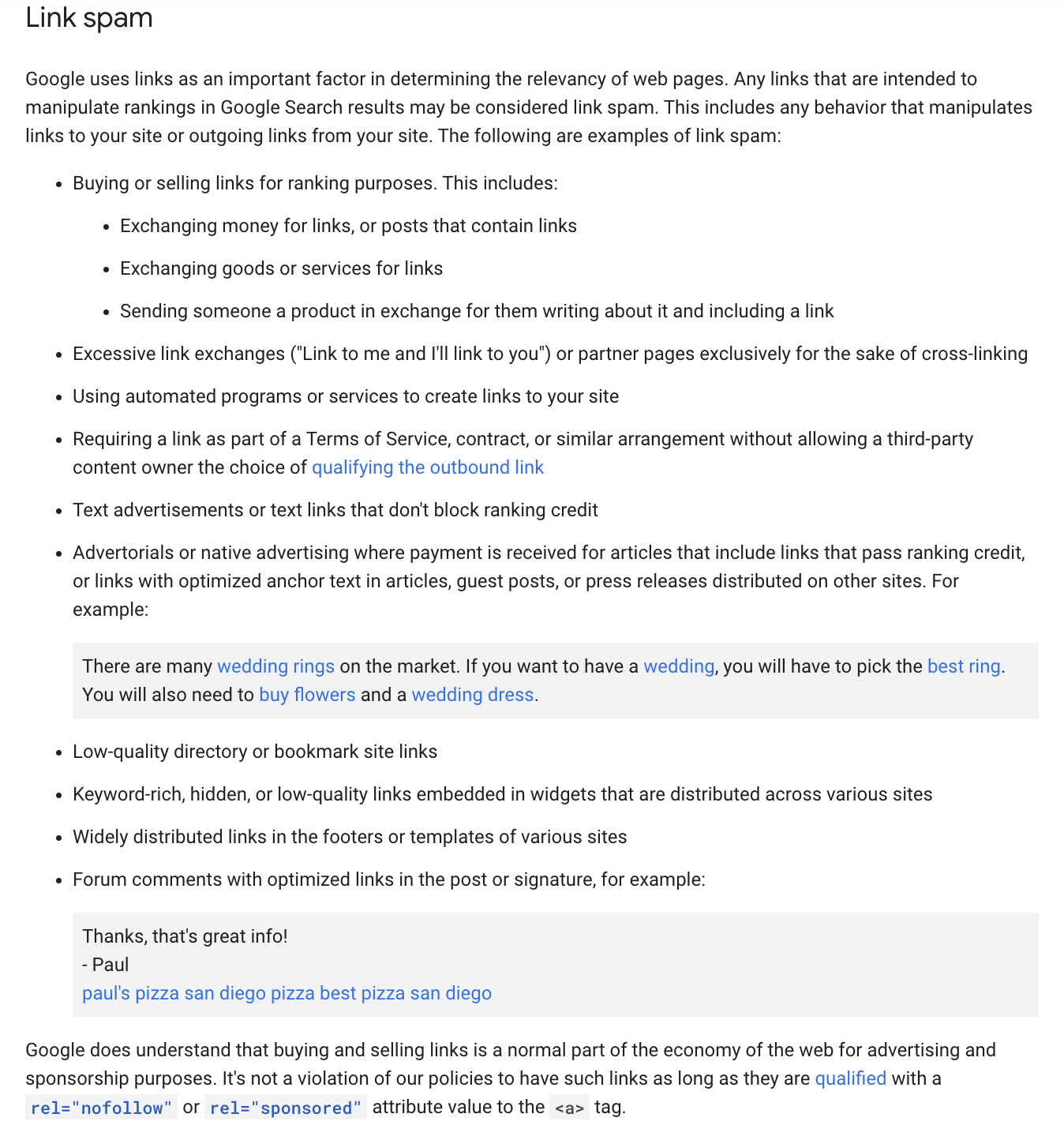Have you ever heard of PBN backlinks? If you are in the SEO industry, chances are you have. PBN stands for private blog network, and it is a network of websites that are used to create backlinks to a target website. The purpose of using PBN backlinks is to boost the target website’s ranking in search engines, especially Google.
But are PBN backlinks a good or a bad thing for your SEO? And are they worth it in 2023? In this guide, we will explore the pros and cons of PBN backlinks, Google’s stance on them, how to spot and remove them, and whether they are worth it in 2023. If you want to learn more about PBN backlinks and how they affect your SEO, read on further.
Pros of PBN Backlinks
PBN backlinks have some advantages that make them appealing to some SEOs and website owners. Here are some of the benefits of using PBN backlinks:
- You have full control over the links: You can choose the anchor text, the content, the frequency, and the placement of the links. You can also modify or remove them at any time.
- You can fast-track the link building process: You don’t have to wait for other websites to link to you organically or through outreach. You can create as many links as you want in a short time.
- You can see immediate results in search rankings: PBN backlinks can boost your domain authority and page authority, which can improve your visibility and traffic.
However, using PBN backlinks also has some limitations and risks that you should be aware of.
Cons of PBN Backlinks
PBN backlinks have some disadvantages that make them risky and not recommended for your SEO. Here are some of the drawbacks of using PBN backlinks:
- You violate Google’s guidelines: Google explicitly states that any links that are intended to manipulate PageRank or a site’s ranking in Google search results may be considered part of a link scheme and a violation of Google’s Webmaster Guidelines. This includes any behavior that manipulates links to your site or outgoing links from your site.
- You risk penalties and ranking drops: Google has sophisticated algorithms and tools to detect and penalize PBN backlinks. If Google finds out that you are using PBN backlinks, it may deindex your network sites, lower your target site’s ranking, or even remove your target site from its index entirely.
- You spend time and money on maintaining the network: Creating and managing a PBN is not easy or cheap. You have to buy expired domains with good metrics, host them on different servers, create unique and relevant content for each site, monitor their performance and security, and update them regularly.
- You lose trust and credibility: Using PBN backlinks can damage your reputation and brand image. If your visitors or customers find out that you are using shady tactics to rank your site, they may lose trust in you and your products or services.
So, it is important to follow white hat link building strategies that are ethical and sustainable, such as creating high-quality content, building relationships with other websites, and earning links naturally.
Google’s Stance on PBN Backlinks
Google’s position on PBN backlinks is clear: they are spammy and manipulative, and they violate Google’s Webmaster Guidelines. Google does not approve of any link building technique that tries to game its system and deceive its users.
Here are some official statements on Google stance on spammy links:

To avoid Google’s wrath and stay on the safe side, you should follow Google’s best practices for link building, such as:
- Link building basics: This is a page from Google’s Search Console Help that explains the basics of link building and why it is important for SEO. It also provides some dos and don’ts for link building, such as creating useful content, asking for links from relevant sites, and avoiding paid or spammy links.
- Link building strategies: This is a video from Google’s Webmaster Central YouTube channel that features Matt Cutts, a former engineer at Google. In this video, he answers some common questions about link building strategies, such as how to get high-quality links, how to measure the value of links, and how to avoid bad links.
How to Spot and Remove PBN Backlinks
If you have used PBN backlinks in the past or you suspect that you have some PBN backlinks pointing to your site, you should take action to identify and remove them as soon as possible. Here are some actionable tips on how to spot and remove PBN backlinks:
Identify PBN backlinks by looking at some common indicators
- Low-quality content: The content on the network sites is poorly written, irrelevant, spun, or duplicated.
- Multiple outbound links: The network sites have a lot of outbound links to different domains, often with exact match anchor texts.
- Unnatural anchor texts: The anchor texts of the links are over-optimized or unrelated to the context of the content.
- Different hosting providers: The network sites are hosted on different servers or IP addresses, often in different countries or regions.
- No contact information: The network sites have no contact details, social media profiles, or other signs of legitimacy or authority.
Audit your backlink profile and find any PBN backlinks using tools
- Google Search Console: This is a free tool from Google that allows you to monitor and analyze your site’s performance in Google search results. You can use it to check your site’s backlinks by going to Links > External links > Top linking sites.
- Ahrefs: This is a paid tool that provides comprehensive data and insights on your site’s SEO performance. You can use it to check your site’s backlinks by going to Site Explorer > Enter your domain > Backlinks > Referring domains.
Remove or disavow PBN backlinks by contacting the site owners or using Google’s disavow tool
- Contacting the site owners: You can try to contact the owners of the network sites and ask them to remove the links pointing to your site. You can use tools like Hunter.io to find their contact details. However, this method may not be very effective or efficient, as some owners may not respond or cooperate.
- Using Google’s disavow tool: You can use this tool to tell Google that you don’t want certain links from external sites to be considered when assessing your site. You can use this tool by going to Google DisavowLinks > Choose your property > Disavow links > Upload a file with the list of links or domains you want to disavow. You can use Ahrefs to export the list of links or domains you want to disavow.
Monitor your backlink profile and prevent any future PBN backlinks
- Checking your site’s backlinks regularly using tools like Google Search Console or Ahrefs.
- Analyzing the quality and relevance of your backlinks using metrics like domain rating, trust flow, citation flow, spam score, etc.
- Reporting any suspicious or spammy links to Google using the spam report form.
- Building natural and organic links from authoritative and relevant sites using white hat link building strategies.
Are PBN Backlinks Worth It in 2023?
After reviewing the pros and cons of PBN backlinks, Google’s stance on them, and how to spot and remove them, you may wonder: are PBN backlinks worth it in 2023?
The answer is: no. PBN backlinks are not worth it in 2023, or in any year for that matter. Here are some reasons why:
- PBN backlinks are against Google’s guidelines and can harm your SEO performance and reputation.
- PBN backlinks are risky and can expose you to penalties and ranking drops.
- PBN backlinks are costly and time-consuming to create and maintain.
- PBN backlinks are ineffective and outdated in 2023, as Google’s algorithms and users’ preferences evolve.
Instead of using PBN backlinks, you should focus on creating high-quality content that attracts and engages your audience, building relationships with other websites in your niche, and earning links naturally from authoritative and relevant sources.
Some alternatives to PBN backlinks that are more effective and ethical are:
- Guest posting: This is a link building strategy where you write an article for another website in your niche and include a link back to your site. This can help you reach a wider audience, establish your authority, and gain a valuable link.
- Link exchanges: A link exchange is a reciprocal agreement between two website owners to link to each other’s websites. This can be done by placing a link to the other website on a page of your own website, such as the homepage, blog page, or footer. Link exchanges can be a mutually beneficial way to improve both websites’ SEO and traffic.
- Niche edits: This is a link building strategy where you find existing articles on other websites in your niche that are relevant to your site and ask them to add a link to your site. This can help you leverage the existing authority and traffic of the website, create contextual links, and boost your ranking.
If you need help with any of these tactics and strategies, please contact us and we will find the best tactic to fit your business!

